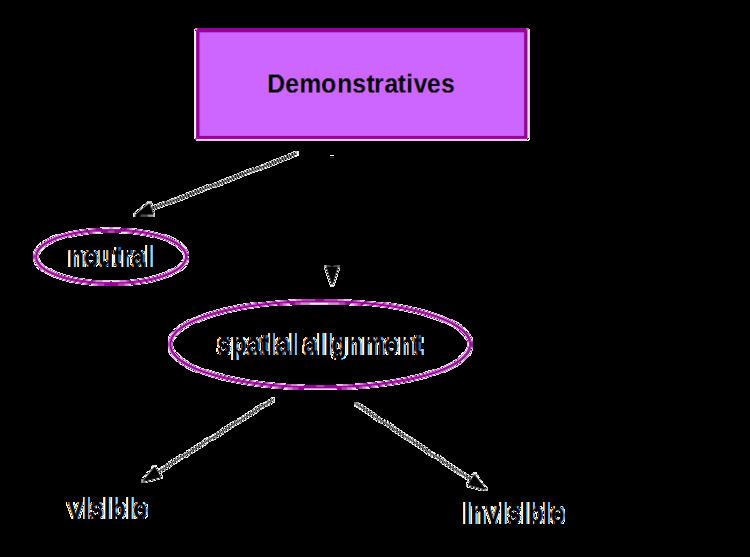ISO 639-3 doa | Dialects EraNon KuIlai Ku | |
 | ||
Native speakers 12,000 (1994)16,000 (2006) Language family Trans–New GuineaChimbu–WahgiChimbuEastern Group of Chimbu familyDom | ||
Dom is a Trans–New Guinea language of the Eastern Group of the Chimbu family, spoken in the Gumine and Sinasina District of the Chimbu province and in some other isolated settlements in the western highlands of Papua New Guinea.
Contents
The Dom people live in an agricultural society, which has a tribal, patrilocal and patrilineal organization. There is only small dialectal differentiation among the clans. The predominant religion is Christianity.
There are three different languages spoken by Dom speakers alongside Dom: Tok Pisin, Kuman and English. Tok Pisin serves as the Papuan lingua franca. Kuman, which is a closely related eastern Chimbu language of high social and cultural prestige, functions as the prestige language used in ceremonies and official situations. School lessons are mostly hold in English.
i u
Allophones
Vowel lengthening in a contour pitched syllable has allophonic character.
Vowel Sequences
iu,io,ia uo
Consonants
The Dom consonant system consists of 13 indigenous and 3 loan consonants.
The phonemes /c/[ts], /j/[ndʒ]and /ʟ/[ʟ] are loan phonemes and unstable in use.
Minimal pairs
˩˥su 'two' ~ ˩˥tu 'thick'
Allophones
Variants can be determined by the factors of dialect or age. Certain exceptions show archaic variants, for example the existence of intervocal [b] in the word ˥˩iba 'but' or the otherwise non-existent sequence [lk], which is used only by elderly people or in official situations. Brackets "()" show, that the allophone is used only in loanwords.
Tones
In Dom the pitch of a syllable has phonemic character. There are three phonemic patterns in monosyllabic words:
Polysyllabic words occur only in the following patterns:
Minimal pairs
wam˥˩ (personal name) ~ wam˩ 'to hitch.3SG' ~ wam˥ 'son3SG.POSS'
Non-phonemic Elements
Morphology
Dom is a suffixing language. Morpheme boundaries between person-number and mood morphemes can be fusioned.
Phrase Strucure
Noun Phrase
If a noun phrase includes a demonstrative element, it has always the last position of the phrase:
Adjective Phrase
Postpositional Phrase
Verbal Phrase
There are no zero-place predicates in Dom. As a subject ˩˥kamn 'world' is used:
Constituent Order
The predominant constituent order is ‘’’S-O-V’’’. Only the predicate has to be expressed overtly. An exception are absolute-topic type clauses, which consist only of one noun phrase.
Characteristics of the constituent order
In the case of a three place predicate the recipient noun always follows the gift noun:
The only position which can be optionally filled is the sentence topic. Possible consituents can be the subject of an equational sentence(default), an extrasentential or a topicalized constituent:
Person and Number
Dom has three different person-number-systems: for pronouns, possessive suffixes on nouns and cross reference markers on verbs.
The marking of dual and plural is not obligatory in all cases but depends on the sem ±human ±animate:
Tense
Dom has an unmarked non-future tense and a marked future tense.
Non-Future
Non-future tense is used, if
Future tense
Future tense is marked by the suffix -na (-na~-ra~-a) and is used, if
A predicate is negated by the suffix -kl. The preceding negation particle ˥ta is optional.
Noun Classifiers
Noun classifiers are lexical items preceding a noun with a more specified meaning. Phonetically and syntactically they form one unit with the following noun and thus differ from an apposition, which consists of two or more phonetic constituents. Noun classifiers can have the following functions:
Repetition
A noun can be repeated to express the following relations:
Loanwords
Tok Pisin is the main source for lexical borrowing, borrowings from English are often made indirectly via Tok Pisin. Borrowed lexemes mostly refer to new cultural objects and concepts as well as proper names and high numbers., which did not exist in the Dom language before:
But recently some already existing Dom words have begun to be replaced by Tok Pisin lexical items:
The Demonstrative System
Dom has a spatial referencing demonstrative system, i.e. there are certain demonstrative lexemes bearing information about the spatial relation of the referred object to the speaker alongside neutral demonstratives. A Dom speaker also uses different lexemes for visible and invisible objects. In the case of visible objects, the speaker locates it on a horizonal and vertical axis as to whether it is proximal, medium or distal from the speaker and on the same level, uphill or downhill.
Demonstratives with spatial alignment:
For invisible objects one must be aware of the cause for its invisibility. If it is invisible because the object is behind the speaker, a proximal demonstrative is used. Objects obscured behind an obstacle are referred to with distal demonstratives and invisible objects by their nature with downhill demonstratives. Invisible objects, that are very far away, are referred to with the downhill distal demonstrative ˩˥ime.
